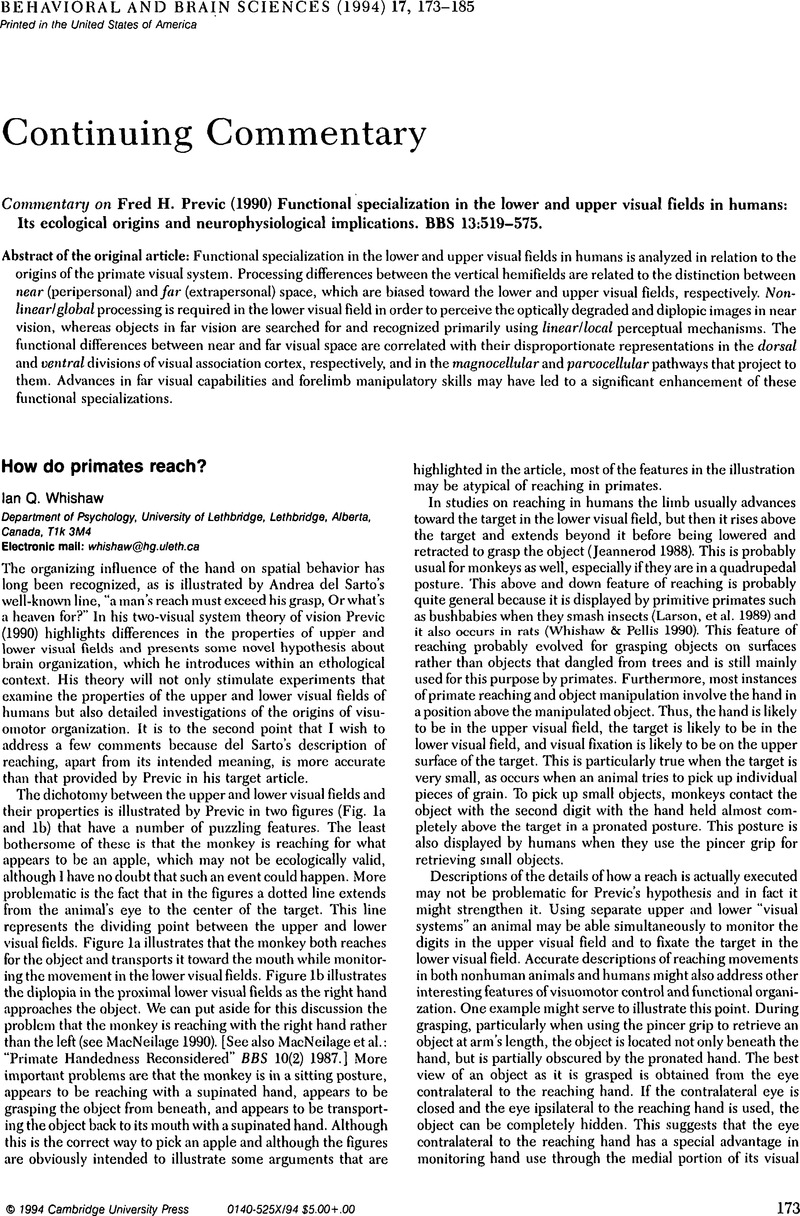Crossref Citations
This article has been cited by the following publications. This list is generated based on data provided by Crossref.
Naito, Tomoyuki
Kaneoke, Yoshiki
Osaka, Naoyuki
and
Kakigi, Ryusuke
2000.
Asymmetry of the human visual field in magnetic response to apparent motion.
Brain Research,
Vol. 865,
Issue. 2,
p.
221.
Caplovitz, Gideon P.
Barroso, Diego J.
Hsieh, Po‐Jang
and
Tse, Peter U.
2008.
fMRI reveals that non‐local processing in ventral retinotopic cortex underlies perceptual grouping by temporal synchrony.
Human Brain Mapping,
Vol. 29,
Issue. 6,
p.
651.
Caplovitz, Gideon P.
and
Tse, Peter U.
2010.
Extrastriate cortical activity reflects segmentation of motion into independent sources.
Neuropsychologia,
Vol. 48,
Issue. 9,
p.
2699.
Sacrey, Lori-Ann R.
and
Whishaw, Ian Q.
2012.
Subsystems of sensory attention for skilled reaching: Vision for transport and pre-shaping and somatosensation for grasping, withdrawal and release.
Behavioural Brain Research,
Vol. 231,
Issue. 2,
p.
356.



